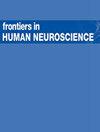新型双臂任务中运动技能习得的比较分析:心理表征和感觉运动反馈的作用
IF 2.4
3区 医学
Q3 NEUROSCIENCES
引用次数: 0
摘要
简介:本研究通过考察心理表征结构、生物力学、触觉压力和表现之间的相互作用,研究了复杂的双臂任务中运动学习的多面性。我们开发了一个新颖的迷宫游戏,要求参与者操纵一个滚动的球体通过迷宫,体现了视觉和触觉控制使用双手的复杂顺序协调。本研究的一个关键组成部分是引入认知基元,即代表特定运动模式和策略的认知和运动动作的基本单位。方法根据初始表现将参与者分为两组:表现差者(PPG)和表现好者(GPG)。实验设置采用了动作捕捉和创新触觉传感器,以捕捉交互过程的详细多模态图像。我们的主要目的是:(1) 评估日常练习对任务表现、生物力学和触觉压力的影响;(2) 研究心理表征结构的变化与技能表现之间的关系;(3) 探索运动学习中生物力学、触觉压力和认知表征之间的相互作用。生物力学分析表明,GPG表现出更优越的运动策略,表现在执行任务时峰值速度更高,速度峰值更少。触觉反馈分析表明,GPG 参与者右手拇指施力更精确、更集中,这表明他们的运动控制能力更强。在认知方面,随着时间的推移,两组人都完善了心理表征结构,但 GPG 组在练习后对任务的认知映射更有条理、更复杂。研究结果支持认知动作架构方法等既有理论,这些理论强调心理表征在计划和执行动作中的作用。我们的分析整合了认知基元,提供了一个理论框架,将可观察到的行为与潜在的认知策略联系起来,从而加深了对各种情境下运动学习的理解。我们的研究强调了采用整体方法进行运动学习研究的必要性,认识到了技能习得过程中认知和运动过程之间复杂的相互作用。本文章由计算机程序翻译,如有差异,请以英文原文为准。
Comparative analysis of motor skill acquisition in a novel bimanual task: the role of mental representation and sensorimotor feedback
IntroductionThis study investigates the multifaceted nature of motor learning in a complex bimanual task by examining the interplay between mental representation structures, biomechanics, tactile pressure, and performance. We developed a novel maze game requiring participants to maneuver a rolling sphere through a maze, exemplifying complex sequential coordination of vision and haptic control using both hands. A key component of this study is the introduction of cognitive primitives, fundamental units of cognitive and motor actions that represent specific movement patterns and strategies.MethodsParticipants were divided into two groups based on initial performance: poor performers (PPG) and good performers (GPG). The experimental setup employed motion capture and innovative tactile sensors to capture a detailed multimodal picture of the interaction process. Our primary aims were to (1) assess the effects of daily practice on task performance, biomechanics, and tactile pressure, (2) examine the relationship between changes in mental representation structures and skill performance, and (3) explore the interplay between biomechanics, tactile pressure, and cognitive representation in motor learning.ResultsPerformance analysis showed that motor skills improved with practice, with the GPG outperforming the PPG in maze navigation efficiency. Biomechanical analysis revealed that the GPG demonstrated superior movement strategies, as indicated by higher peak velocities and fewer velocity peaks during task execution. Tactile feedback analysis showed that GPG participants applied more precise and focused pressure with their right-hand thumb, suggesting enhanced motor control. Cognitively, both groups refined their mental representation structures over time, but the GPG exhibited a more structured and sophisticated cognitive mapping of the task post-practice.DiscussionThe findings highlight the intertwined nature of biomechanical control, tactile feedback, and cognitive processing in motor skill acquisition. The results support established theories, such as the cognitive action architecture approach, emphasizing the role of mental representation in planning and executing motor actions. The integration of cognitive primitives in our analysis provides a theoretical framework that connects observable behaviors to underlying cognitive strategies, enhancing the understanding of motor learning across various contexts. Our study underscores the necessity of a holistic approach to motor learning research, recognizing the complex interaction between cognitive and motor processes in skill acquisition.
求助全文
通过发布文献求助,成功后即可免费获取论文全文。
去求助
来源期刊

Frontiers in Human Neuroscience
医学-神经科学
CiteScore
4.70
自引率
6.90%
发文量
830
审稿时长
2-4 weeks
期刊介绍:
Frontiers in Human Neuroscience is a first-tier electronic journal devoted to understanding the brain mechanisms supporting cognitive and social behavior in humans, and how these mechanisms might be altered in disease states. The last 25 years have seen an explosive growth in both the methods and the theoretical constructs available to study the human brain. Advances in electrophysiological, neuroimaging, neuropsychological, psychophysical, neuropharmacological and computational approaches have provided key insights into the mechanisms of a broad range of human behaviors in both health and disease. Work in human neuroscience ranges from the cognitive domain, including areas such as memory, attention, language and perception to the social domain, with this last subject addressing topics, such as interpersonal interactions, social discourse and emotional regulation. How these processes unfold during development, mature in adulthood and often decline in aging, and how they are altered in a host of developmental, neurological and psychiatric disorders, has become increasingly amenable to human neuroscience research approaches. Work in human neuroscience has influenced many areas of inquiry ranging from social and cognitive psychology to economics, law and public policy. Accordingly, our journal will provide a forum for human research spanning all areas of human cognitive, social, developmental and translational neuroscience using any research approach.
 求助内容:
求助内容: 应助结果提醒方式:
应助结果提醒方式:


